
At FixThePhoto, we edit thousands of pictures every month, which include wedding photos, fashion shoots, Airbnb listings, and online shop photos. Every customer asks for something different.
After looking at a year’s worth of real editing orders, my colleagues and I decided to make a list of the photography editing styles people asked for the most. The most popular style was Clean Editing – a simple, classic look that always works. These are the styles we see the most: some are old favorites, some are surprising, and some are new ones we enjoy.
A lot of beginner retouchers make the mistake of using the same photography editing style on every photo. This can work for photos edited for Instagram, but not for other orders. For example, a dark and dramatic filter might look good on a foggy forest, but it would make a happy family photo look depressing.
That’s why it’s important to try different editing styles. You start to see which style makes a photo look better and which one doesn’t fit. It’s not about having just one style. It’s about learning to choose the right style for each picture.
You still need to keep your work neat and make good choices. A good retoucher knows when to change their editing to match the photo, instead of trying to change the photo to match their usual style.
Genres: Portraits, commercial, product, weddings
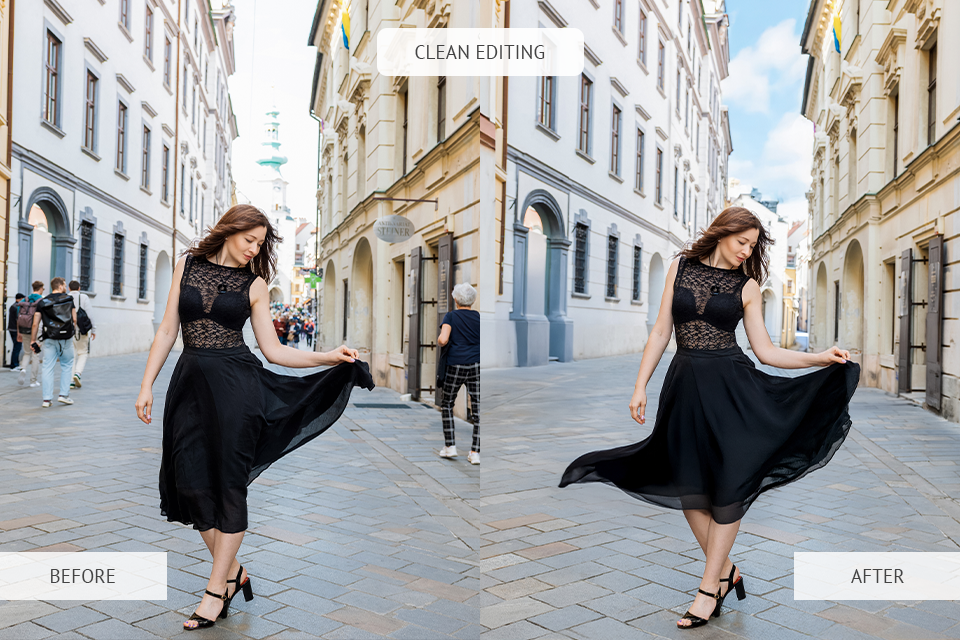
This is the editing style most clients ask for from our FixThePhoto team. Clean editing is making a photo look nice and clean without changing how it looks. We fix problems like bad lighting, strong shadows, or messy backgrounds, but we keep the photo looking natural
One time, our team was retouching some maternity photos taken at sunset. The light was pretty but hard to work with, and there were some random cars in the background. We fixed the colors, made the shadows lighter, and cleaned up the background, but we didn’t change the skin much. In the end, the photos looked soft, emotional, and real- exactly what the client wanted.
Genres: Portraits, documentary
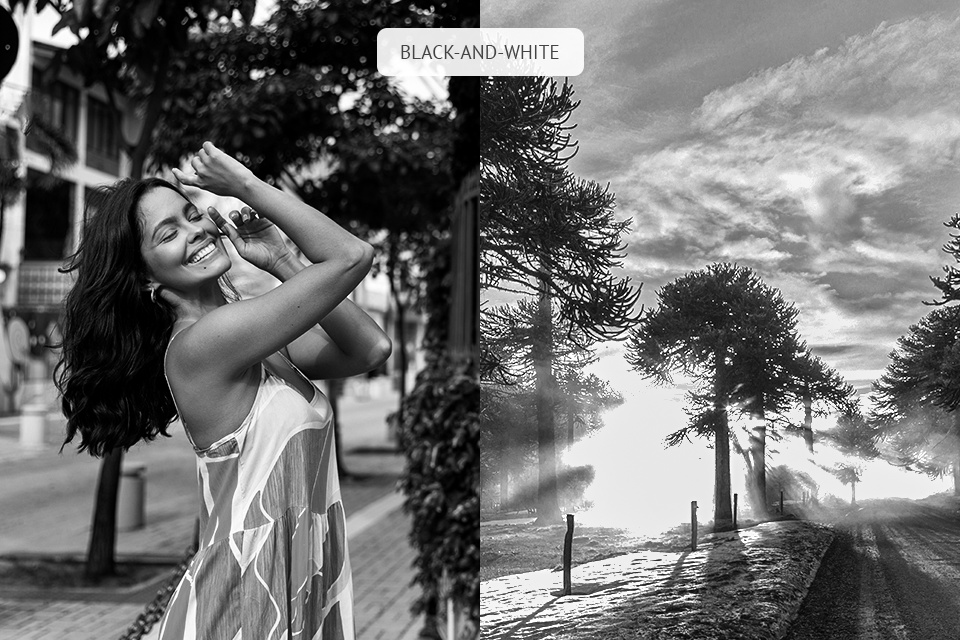
Usually, black-and-white editing is used to show strong emotions. When there’s no color, you notice the light, shadows, and small details much more.
I used this style for photos of a dancer. In the original, the background had bright green leaves that were kind of distracting. When I made the photo black and white and changed the tones a little, she stood out much more, and the photo looked more powerful.
One of my teammates also used a black and white photography editing style for street photos. The sunlight was very strong, but in black and white, it looked cool instead of messy.
Genres: Landscape, interiors, travel
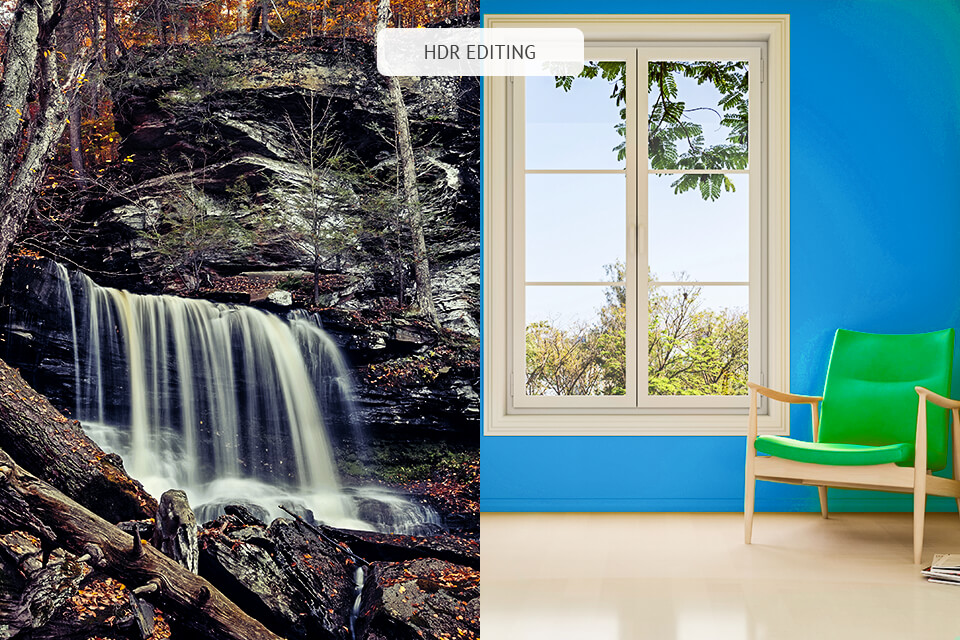
HDR editing helps when a photo has very dark and very bright parts at the same time. Clients often ask for this when taking photos of houses or nature, where the light is difficult to control.
I used HDR editing for pictures of a waterfall. The water was super bright, and the trees were very dark. I took a few photos with different settings and then mixed them. I also used some shadow photography tips to make everything look even.
Another colleague used HDR when taking pictures of a house. The inside was dim, but daylight was coming through the windows. After editing, the room looked bright and clean, and you could see all the details.
Genres: Engagements, family, lifestyle
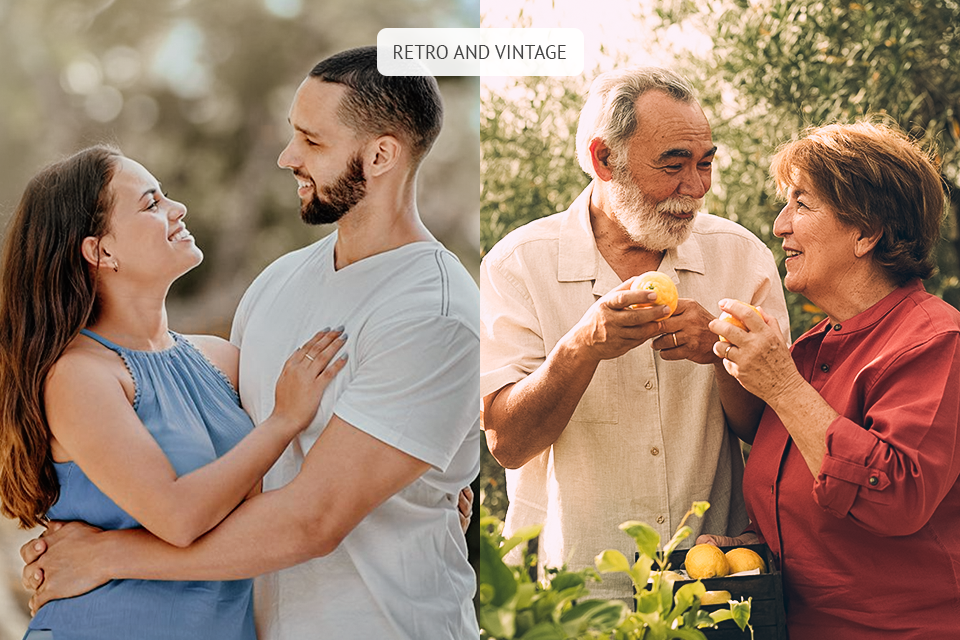
Retro and vintage editing styles are great for making photos feel warm and a little old-fashioned. People ask for this when they want their photos to feel nostalgic or look like pictures from old film cameras.
I love using this style for family and couple shots. One time, I edited pictures from a couple’s anniversary at an apple orchard. I lowered the contrast, added warm colors, a little bit of grainy texture, and slightly faded the picture. It made the photos feel dreamy and timeless, like looking through an old photo album.
Genres: Couples, lifestyle, outdoor

The matte effect makes photos look soft and a little bit moody. It’s perfect for peaceful moments, romantic photo shoots, or pictures taken on foggy days. Most clients don’t know the name of it, so they just say, “Make the photo look soft and dreamy, please.”
I first tried this style for engagement photos in a forest. It was a misty morning, and the couple looked relaxed among the trees. I lifted the blacks, softened the highlights, and slightly desaturated the colors. The final photos felt very peaceful and looked like a scene from a movie.
Genres: Instagram, events, brands

Collage photo editing is very popular now. It’s a fun way to tell a story using lots of pictures. People love it for Instagram, baby milestones, and event highlights.
Once, I made a baby’s first-year timeline for a family using free Photoshop collage templates. I picked twelve pictures, added soft white borders around them, and wrote pastel-colored labels. The parents loved it so much, they printed it as a poster for their house.
Another person on my team helped a fashion blogger show all her travel outfits. She put the outfits in a neat grid and added little notes and stickers, which helped the blogger share her whole trip in one post.
Genres: Weddings, street, fashion

This year, our team had a lot of fun using motion blur. Sometimes, people ask us to make a photo feel more alive, and that’s when we use this photo editing style. It’s great for pictures where people are dancing or running.
One time, I used it on a wedding photo where the couple was spinning barefoot on the grass. The original picture was nice, but after adding a soft blur around it, it looked more like a sweet memory than just a photo. The bride said it became her favorite picture from the whole day.
We usually get asked for motion blur by couples and people who want their photos to show real emotions. Here, blur isn’t a mistake- it’s part of the feeling.
Genres: Fashion, nightlife
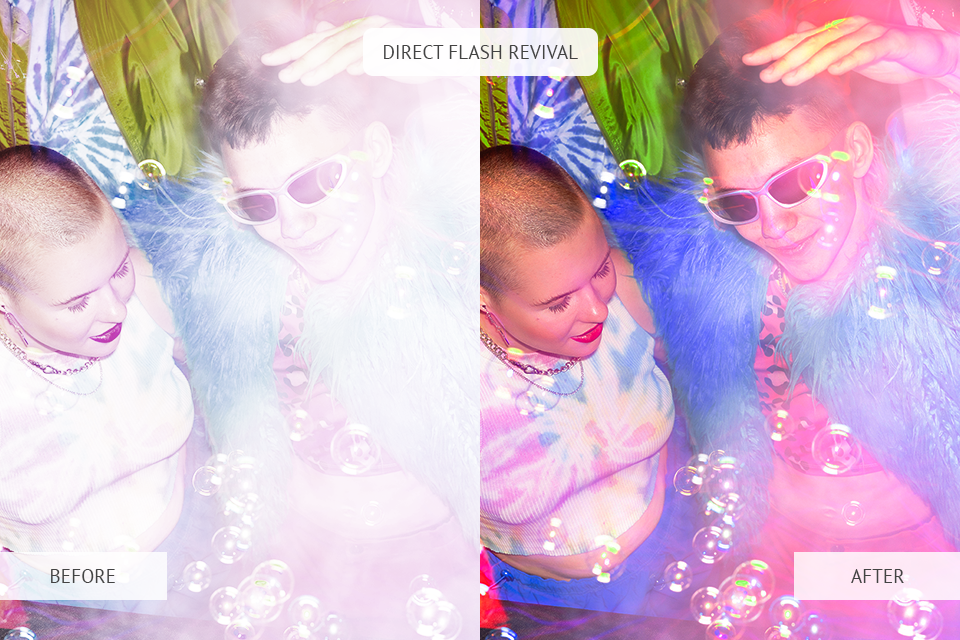
We didn’t expect so many people to ask for this style. At first, direct flash felt old-fashioned, but now it’s a trend again because it makes the images look bright, bold, and full of life. Clients want photos that look real, not too perfect like studio photos.
One time, I edited pictures from a birthday party in a dark club. The photographer used a strong flash right from the camera. Instead of trying to make it softer, we made it even stronger. The photos turned out colorful, sharp, and exciting. The client said it reminded her of a fun party from the early 2000s, which is exactly what she wanted.
Genres: Portraits, product, business, beauty
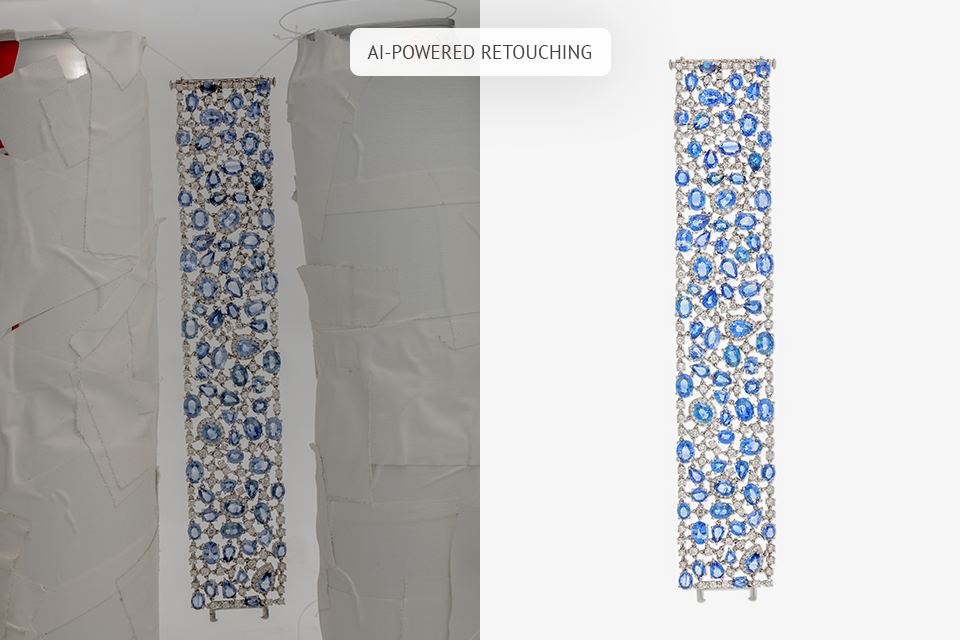
We didn’t realize how popular this style had become until we checked our orders. Clients often want fast, clean edits, especially when they have lots of photos, and AI tools help us do that. We use AI to quickly fix things like messy backgrounds, skin issues, and lighting without making it look unnatural.
I once worked on over 200 jewelry photos for a small brand. The lighting was different in many pictures, and there were tiny problems in the backgrounds. I used AI to clean them up fast, then made small changes by hand to keep everything consistent.
This product photography editing style saves a lot of time but still keeps the photos looking natural. Most people who choose it care about speed and simplicity, and they’re always surprised by how real the final pictures look.
Genres: Weddings, family, golden hour
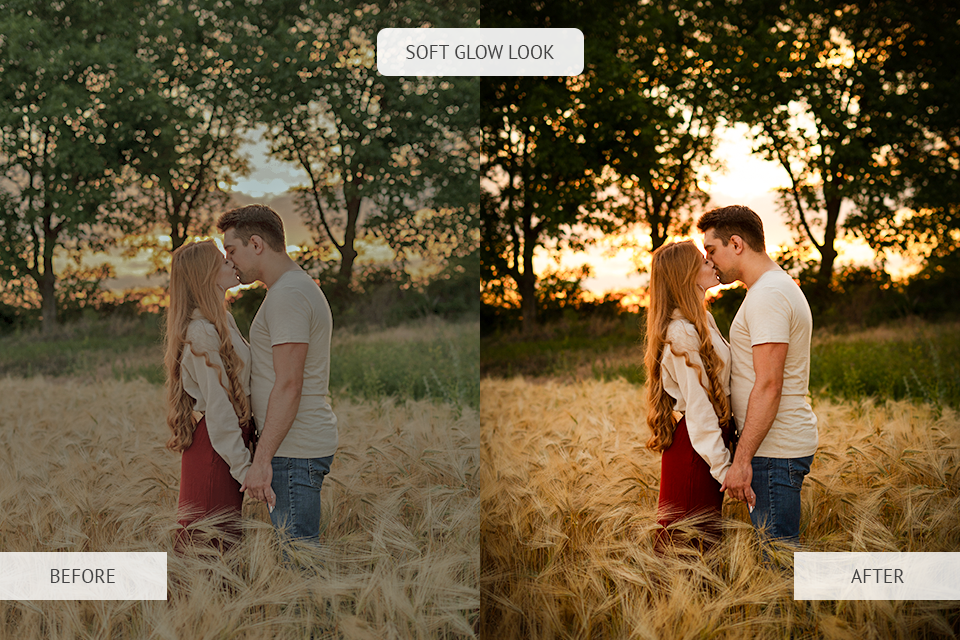
The soft glow is one of the top styles families and couples ask for. Almost everyone on our team recently worked on a project that used it. People love how soft, warm, and calm their pictures feel with this style.
It’s perfect for early morning or golden hour sessions. I used this photography editing style during a family session in a field. The soft glow made the photos feel cozy and memorable without taking attention away from the family.
Genres: Elopements, street, editorial
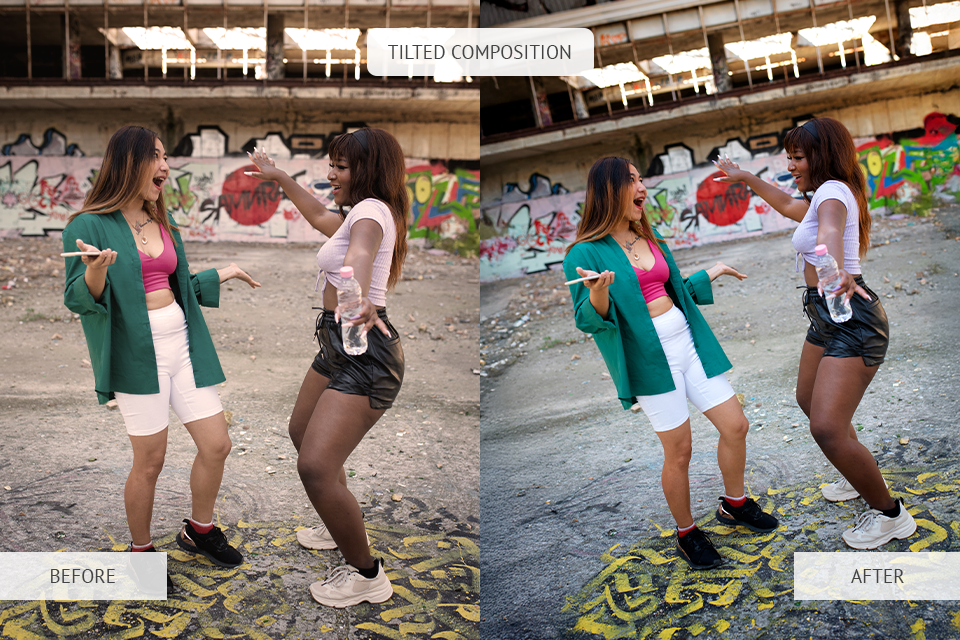
We’ve been seeing more requests for tilted compositions lately. It’s a simple but powerful trick: just tilting the camera a little can totally change how a photo feels. It’s perfect for couples who want something less traditional or brands that want a modern shot.
I used this style during a city elopement. The couple was walking under string lights and past graffiti walls. Tilting the frame a bit made the photo feel more fun and real, not too posed.
This style is great for making small, everyday moments look new and exciting. We often use it when a client says, “Make it feel less traditional, please.”
First, ask yourself: What feeling do you want your photos to give people? Look at your favorite pictures and see if they have anything in common. Do you like warm colors? Or do you prefer bright, bold pictures with lots of contrast? Finding your editing style starts by noticing what you naturally like.
Here are some ways to help you find your style:
And most importantly: be patient with yourself. Good editing styles don’t happen overnight. They grow as you practice and try new things. Your style will change as you get better, and that’s normal. Keep trying, adjusting, and trust yourself.
We didn’t just guess which editing styles are popular. We asked the people who would know best our team of photo editors.
Over the past year, we worked on thousands of photo orders, and each one had its own editing request. We looked back at all these projects to see which styles clients asked for the most. Each retoucher shared a list of the styles they worked on the most, and we compared all the answers. After talking it through, we made a final list of the most popular styles.
Clean editing was the number one most requested photography editing style, but we were surprised to see a lot of requests for soft glow, direct flash, and collage layouts too. Once we had the data, we just ranked each style by the number of requests for it.
Some clients also asked for creative styles like high key lighting, light leaks, double exposure, selective focus, and pastel color grading. These styles were less common, but we still loved working on them.
They’re usually picked for artsy shoots, creative brand photos, or fun fashion projects. Even though they’re not the most popular, it’s always exciting when someone wants something unique and different.